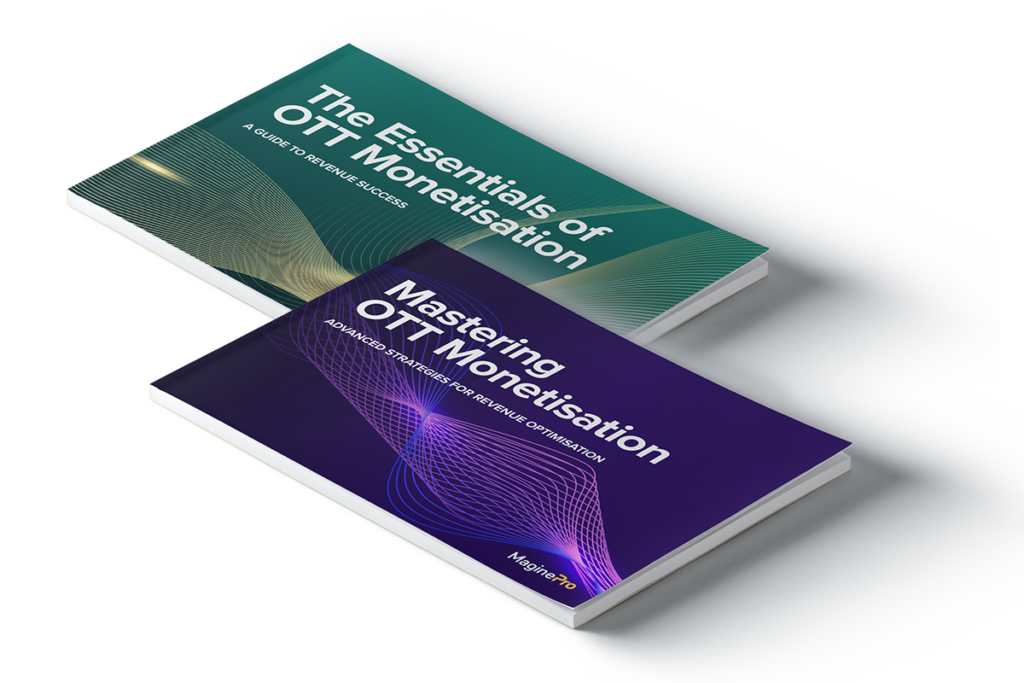The Top Five Challenges When Migrating OTT Platforms: What You Need to Know

Whatever your reason for considering a migration away from an existing OTT platform, it’s not a decision any service takes lightly. Like moving home, fear of the complications and challenges involved in a migration can lead streaming services to put off making a change until their current home becomes absolutely intolerable. But while moving providers can be challenging, it doesn’t have to be stressful. It’s a process we’ve guided a number of our customers through. In this blog, I’ll highlight some of the key considerations that you should take into account before embarking on a migration.
1. Migrating your video content to a new OTT platform
You’ve invested time and money in building a content library and optimising it to engage your audience. You’ll need to efficiently move video assets, associated images and metadata into your new OTT platform. Don’t forget this includes rights and availability information for each asset and any editorially-generated data such as thematic collections.
If you still have the source video files, you can ingest these directly into your new platform for re-transcode and wrapping with fresh DRM. There may be costs involved, but it can be worth it to get the correct video renditions for all the consumer devices you’ll now be targeting. For example, it’s much better to go back to the high-resolution source and create better-quality assets for new big-screen apps.
If you can’t access the original source content, or you’ve already created multi-bitrate files in all the sizes you need, it’s possible for your new platform provider to exchange encryption keys with your existing platform and re-use your current files. However, this requires timely cooperation from your outgoing vendor, which cannot always be guaranteed.
As well as migrating content, you’ll want to think about when to stop ingesting new assets into the old platform. It’s common to run both systems in parallel for a short time to ensure a smooth transition, but this is likely to create extra work for your editorial team, so it’s important to minimise the dual-running period where possible.
2. Transitioning subscription plans from an existing OTT platform
In addition to the content itself, you’ll need to go through a mapping process to make sure the subscription plans your customers enjoy today are still available when you’ve moved to your new technology platform. Keep naming and content selection exactly the same to avoid confusing customers during the transition and damaging your brand reputation.
If one of the reasons you’re migrating is to take advantage of new business models such as AVOD or TVOD alongside your subscription packages, it’s important to think carefully about how these will co-exist. You will also want to plan how you will communicate the migration and the new offerings to existing customers.
If you’d like to know more about implementing hybrid business models in your OTT service, I’d recommend you read our new e-guide: The Essentials of OTT Monetization our our advanced white paper, The Profit Playbook: Proven OTT Revenue Growth Tactics.
3. Moving users to a new OTT platform without creating friction and driving churn
One of the areas that most concerns OTT services is the friction that will be created for users in any platform switch. It’s sensible to consider the potential for churn and that’s why we suggest doing everything to avoid making customers re-register. One option is to migrate all their data, including passwords. This is the most seamless approach for users but there are security implications. Another option is to migrate all the other data, but ask them to create a new password at their first login via the new platform.
As well as granting access, user accounts must also be transitioned with all the relevant entitlements under their existing subscriptions. Making sure they’re mapped accurately is essential to avoiding customer complaints. Depending on the vendor of the OTT platform, the entitlements may be more or less tightly coupled to the individual video assets. This is something to consider carefully in parallel to the content migration questions we looked at earlier in this blog.
4. Preventing payment method errors in an OTT platform migration
The natural extension of concerns about migrating user accounts is the worry about friction around payment methods. It’s a particular problem for SVOD services that rely on stored card details to process monthly or annual subscription transactions. The more seamless the migration for the user, the less likely it is that consumers will simply not bother to take the steps required to maintain their subscription.
The process of migrating stored credit/debit card details will be easier if you’re using the same payment provider despite moving to a different streaming platform. But it can also be managed smoothly between different payment providers with sufficient notice and cooperation. Again, it’s worth looking at the advanced strategies outlined in our white paper, The Profit Playbook, especially the section on subscription dunning and win-back campaigns.
5. Seamlessly switching users to new versions of your streaming apps
While many OTT services switch platforms to unlock access via a wider range of consumer devices, including Smart TVs, it’s also important to consider how you migrate users from existing apps.
With Android apps hosted in Google Play or iOS apps via or Apple’s App Store, it’s a relatively simple process. Once the app versions from the new provider are ready to be published, they can be uploaded to the store with the same app ID as your existing apps, so the users get the new app whenever they next do a manual or auto app update. This generally requires minimal interaction with Apple or Google and little to no delay.
If you’ve got existing big screen apps, however, you’ll face a longer approval process. So, it’s important to start the dialogue with TV manufacturers like Samsung and LG as early as possible so you can work closely with them on managing the approvals and publication process. Working with an established big screen app developer is a good way to reduce the time involved in this transition.
For more on the process of developing, publishing, and maintaining big screen apps, download our whitepaper, Go Big Or Stay Small.
The path to progress – milestones for migrating your OTT service
So now we know the key challenges involved in migrating your OTT service. In an upcoming blog, we’ll look at how Magine Pro manages the milestones in a typical customer migration project to ensure the smoothest possible experience for viewers and content managers alike. Follow us on LinkedIn to be updated when the blog is published.
Want to know more?
If you’d like to talk to Magine Pro’s experts about migrating your OTT service away from your current vendor, why not book a meeting.
Navigating the Future of Streaming: 5 Key Takeaways from IBC 2023
Matthew Wilkinson, CEO of Magine Pro, shares his insights on IBC 2023, highlighting five crucial lessons for navigating the future of streaming.
A month has passed since our participation at IBC 2023 in Amsterdam. This year, the event saw a remarkable surge in attendance and was a real reflection of an industry in constant flux. Beyond the customary customer value demonstrations, IBC remains an event of strategic importance, offering a unique opportunity to gain valuable insights, driving the acceleration of our understanding of market dynamics and customer needs.
With that being said, here our five key takeaways from IBC 2023:
1. Pacing with Technology Trends
The industry’s innovation pace is relentless. Attending IBC to discover new solutions and technological advancements might already place you behind the curve. At Magine Pro, we’ve embraced Large Language Models like ChatGPT to augment our metadata and streamline workflows. The initial allure of this technology might wane, but its implementation promises significant and rapid business impact.
2. Navigating Market Shifts
The past 18 months have seen a profound shift in the macroeconomic landscape, with diminished capital availability and elevated performance expectations from streaming industry investors. This transformation is driving us to innovate swiftly, to prioritise return on investment and realise cost reductions & service. The reins of decision-making have shifted from CTOs to CFOs, who demand improved ROI, especially in content investments.
3. Content, Content, Content
Success in this evolving landscape centres around content strategies and strategic partnerships to reach audiences. Service providers can no longer afford to deploy capital to build and integrate both the technology and invest in content; businesses must be focused on validating the go to market hypothesis, and the “product” consumers demand is content, not the technology behind the scenes. Capital needs to be deployed smartly to drive customer acquisition, engagement and retention – and building a customer technology stack, will not significantly optimise for this much better than outsourced platforms.
4. Embracing Broader Horizons
It is imperative to consider the broader context beyond traditional streaming. Evolving technology consumption behaviours, notably influenced by platforms like TikTok, are reshaping how consumers engage with media and allocate their time. The traditional streaming media market must evolve to align with changing consumer expectations, and proactive innovation can capitalise on shifting preferences.
5. Readiness for Transformation
The industry is poised at a crossroads. As we look to the future, our success hinges on our adaptability and innovative spirit. Prioritising content, leveraging technology, and anticipating evolving consumer behaviour will position us to thrive in this dynamic landscape.
On a last note, I’ll leave you with a quote from a meeting with an industry peer “There’s opportunity for everyone to succeed in the market – we just need to figure out how!”
_____________________________________________________________________________________
If you weren’t able to attend the IBC this year and missed the panel discussion ‘Building an OTT Video Service – Custom Build or Managed Service’, where Matthew shared insights alongside other industry experts, don’t worry! You can catch up on the panel right here.
Want to find out more about navigating the future of streaming and how Magine Pro can help? Get in touch or book a meeting with a member of the team to find out more. We also have some useful insights and resources available on our blog and free to download white papers, ebooks and more.

